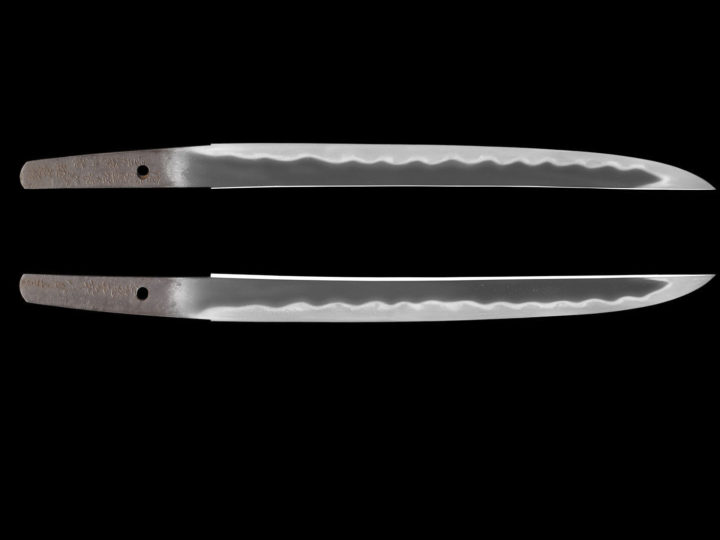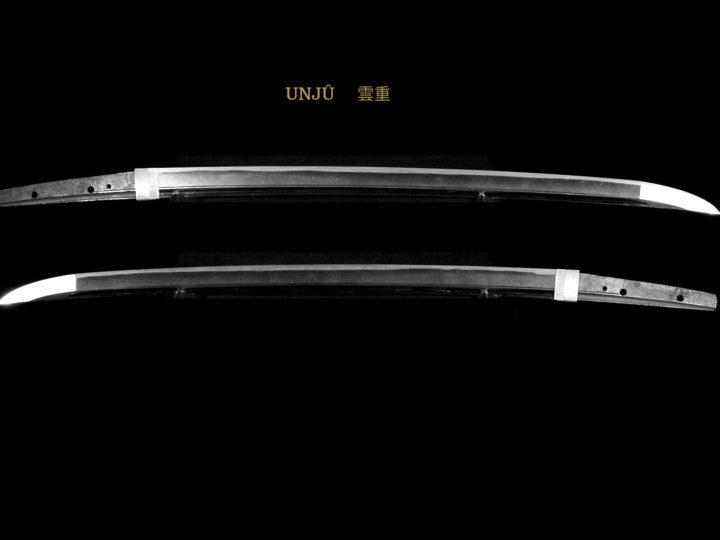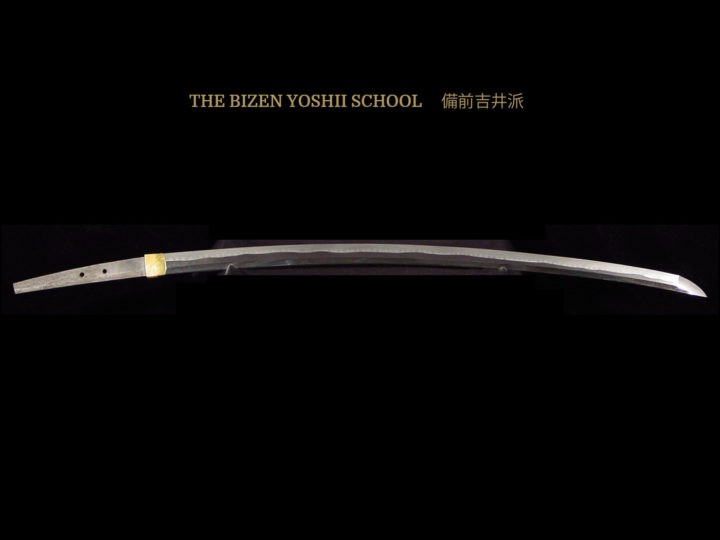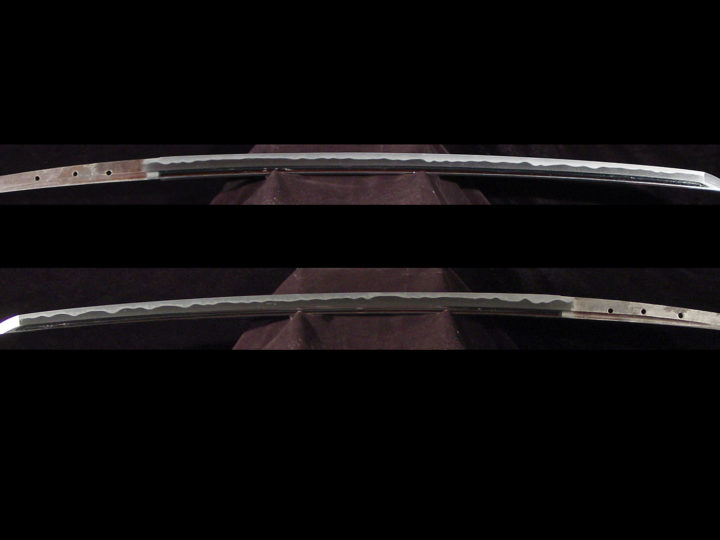
Bizen Osafune Chikakage (備前長船近景) was the son of Chikatsune(近恒). He was the student of Nagamitsu (長光) and a contemporary of Bizen Kagemitsu (備前景光). He has left dated works from spanning from the Bunpô era (文保) at the end of the Kamakura period to Teiwa (貞和) in the beginning of the Nanbokuchô (南北朝) era. By the western calendar this means between 1317 and 1345. He was almost exactly a contemporary of Kagemitsu (景光), perhaps coming only slightly later. Interestingly, some of Kagemitsu’s (景光) works bearing the Bunpô era (文保) dates appear to have been substitute signed by Chikakage (近景), thus indicating that there was a very close relationship between these two smiths.
It is generally agreed that Chikakage’s (近景) workmanship is very close to that of Kagemitsu’s (景光) but slightly less skillful. Such an evaluation is based particularly on the quality of the jigane. Compared with Kagemitsu’s (景光) tight and refined grain structure, the works of Chikakage (近景) appear relatively coarse and include some loose-grained areas. As a result, his utsuri in the ji tends to be not as clear as it should be.
`Another important trait of Chikakage (近景) is that while his ha is nioi based, as one would expect with a Bizen smith, it is also nie grained. That is, there is an ample amount of nie covering the nioi guchi. His bôshi also differs somewhat from Kagemitsu’s (景光) and the other smiths who produced the san–saku bôshi. The bôshi of Chikakage (近景) is distinctive in that it crosses the yokote in a straight line for a short distance and then undulates in a san-saku style to form a ko-maru or slightly pointed tip. There is always kaeri, which is rather wide and has a stooping tendency.
Chikakage (近景) produced many fine works including a National Treasure blade that is dated Karaku yo-nen (嘉暦 四年) or 1339. He also made four tachi that are classified as Jûyô Bunkazai and one tachi and three katana that are Jûyô Bijitsuhin.
SUGATA: Most of the works of Chikakage (近景) are made in the same style as Kagemitsu (景光). That is in the slender and graceful style of the Kamakura era. The kasane is rather thin and there is funbari. They are shinogi-zukuri with iori mune. There are later blades made during the Nanbokuchô era that tend to be wider and more in keeping with the changing styles brought about with the coming of the Nanbokuchô era.
JITETSU: The kitae is ko-itame mixed with a small amount of masame. There is ample ji-nie, which is fine and dense forming many chikei. There will be an overall coarse feel to the ji-hada when compared to the works of the other top Osafune smiths of this time. Midare utsuri will be found but it will tend to be somewhat subdued. The grain structure in the shinogi-ji will be a fine masame.
HAMON: The hamon will be nioi based, as is the case with Bizen works. There will be profuse nie structures covering the nioi-guchi. The hamon will usually be a combination of suguba with some modest undulation as well as ko-gunome and ko-chôji with some squarish variety. One of the important features of Chikakage’s (近景) chôji is that it is somewhat saka in quality (backward slanting). It will contain ashi and yô. The saka tendency of his chôji is an important kantei point.
BÔSHI: As mentioned, his bôshi is also unique. While it is similar to the san-saku bôshi of Nagamitsu (長光), Sanenaga (眞長), and Kagemitsu (景光), it will cross the yokote in a straight line and then undulate slightly to form a ko-maru shape with kaeri.
NAKAGO: The chiseling style of this smith differs from that of the Osafune mainline smiths’ in that the horizontal strokes start from the opposite end. This technique is called saka-tagane. This style of chiseling is also found in the works of Morikage (盛景) and Yoshikage (吉景) who came in the middle of the Nanbokucho Era. In addition to the similar chiseling style, these smiths have the kanji, Kage (景), in common with Chikakage (近景). This would tend to indicate the possibility that they belonged to the same line or sect of the Osafune School. The tip of the nakago will be kurijiri and the yasurimei will be kiri or sujikai.
MEI:
BIZEN no KUNI OSAFUNE JÛ CHIKAKAGE 備前国長船住近景
BIZEN no KUNI OSAFUNE CHIKAKAGE 備前国長船 近景
BIZEN OSAFUNE JÛ CHIKAKAGE 備前長船住近景
BIZEN (no) KUNI JÛ OSAFUNE CHIKAKAGE 備前国住長船住近景
BISHÛ OSAFUNE JÛ CHIKAKAGE 備州長船住近景






